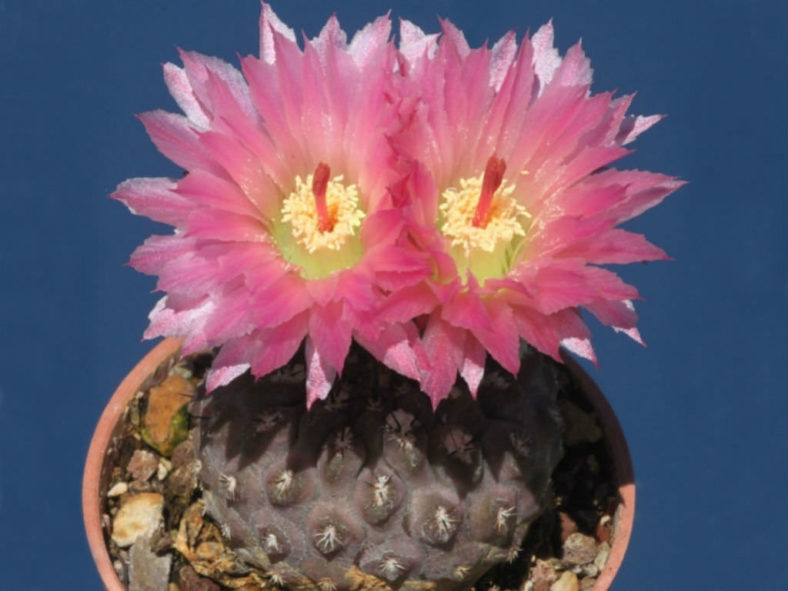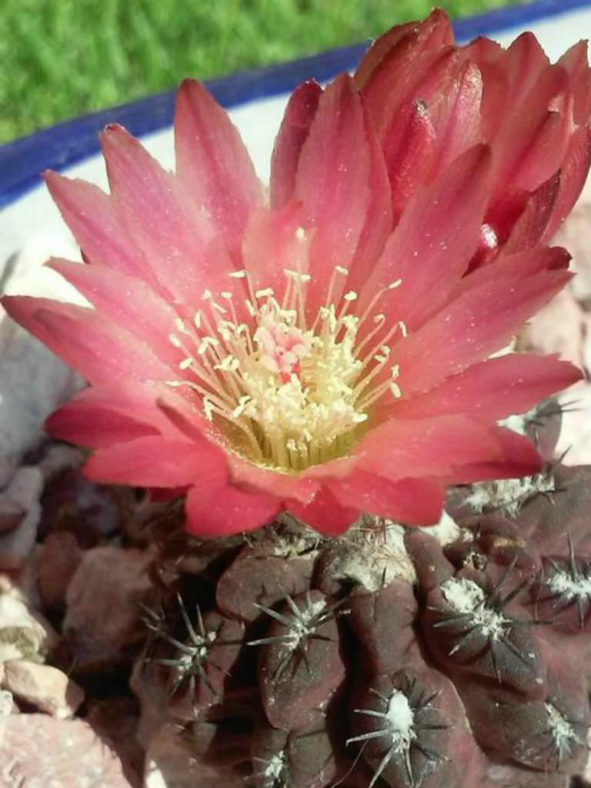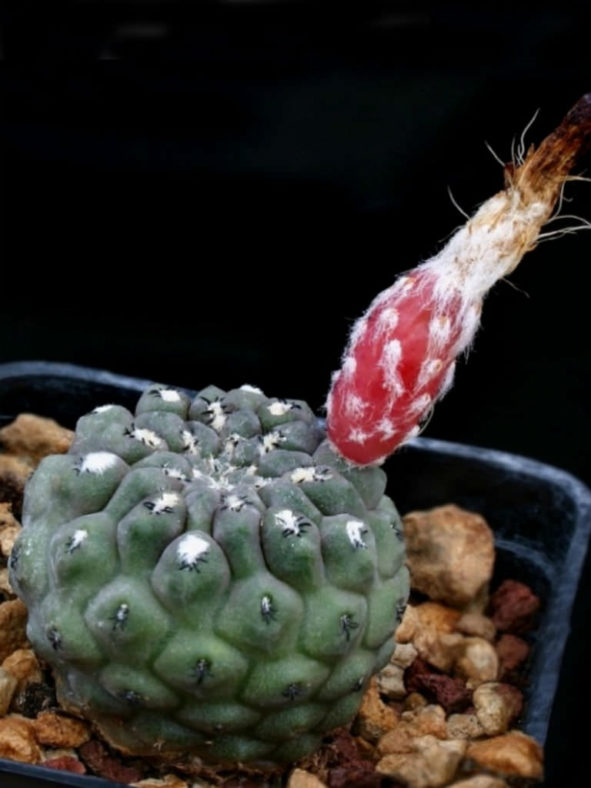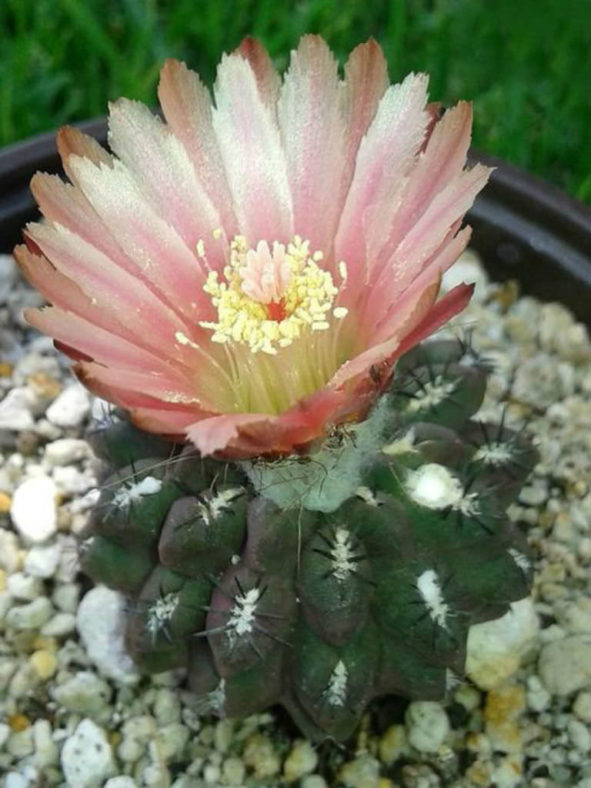Scientific Name
Eriosyce napina (Phil.) Katt.
Synonym(s)
Chilenia napina, Chileorebutia napina, Eriosyce napina subsp. napina, Hildmannia napina, Malacocarpus napinus, Neoporteria napina, Notocactus napinus, Thelocephala napina
Scientific Classification
Family: Cactaceae
Subfamily: Cactoideae
Tribe: Notocacteae
Genus: Eriosyce
Origin
Eriosyce napina is native to Chile. It occurs in the Atacama Region in the valley of the Huasco River between Vallenar and Huasco.
Description
Eriosyce napina is a cactus geophyte with a subspherical stem with ribs dissolved into tubercles tipped with a wooly areole and a cluster of short black spines. The solitary stem is flattened at the apex and slowly grows to 1.6 inches (4 cm) in diameter. Spines are 0.2 inches (0.5 cm) long and closely pressed against the stem. Each areole bears 0 to 2 central and 6 to 14 radial spines. The color of the stem varies from gray-green to reddish-brown. Tubercles are up to 0.2 inches (0.5 cm) in diameter.
The shiny flowers are whitish, yellowish, pinkish, to pale red and appear at the apex of the stem in late spring. They are funnel-shaped, up to 1.4 inches (3.5 cm) long, and 2.4 inches (6 cm) in diameter. The large wooly fruits are red with tiny black seeds and often tear open at the base.

Hardiness
USDA hardiness zone 9b to 11b: from 25 °F (−3.9 °C) to 50 °F (+10 °C).
How to Grow and Care
Eriosyce cacti require intense sun exposure to develop good spinal growth but tolerate light shade. Therefore, some light shade may be useful on the hottest summer days.
A rich, fast-draining cactus mix is ideal. Good drainage is essential for health.
Water the cactus every two weeks or slightly less often during the summer, depending on how moist the soil remains. In the winter rest period, cut watering back to once a month, or in humid areas, not at all. One of the key factors in success with these cacti is avoiding any hint of wet soil. Because their root systems are weak, they are especially prone to root rot, eventually killing your plant.
Regular doses of cactus fertilizer will help it grow its best during the summer. However, use diluted fertilizer for the best results.
See more at How to Grow and Care for Eriosyce.
Subspecies
Links
- Back to genus Eriosyce
- Succupedia: Browse succulents by Scientific Name, Common Name, Genus, Family, USDA Hardiness Zone, Origin, or cacti by Genus
Photo Gallery
Click on a photo to see a larger version.


